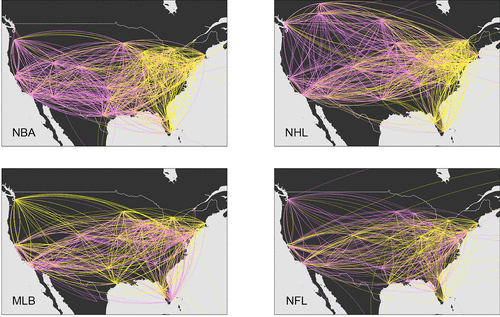Study: Sports can lower its emissions with COVID strategies
 30 November 2021
30 November 2021
It might sound like heresy to sports fans everywhere, but a Canadian researcher says that North America’s major leagues can dramatically reduce team carbon footprints by making some of the same changes they did during the ongoing COVID-19 pandemic.
Seth Wynes is a postdoctoral fellow in the Department of Geography, Planning and Environment at Concordia University in Montreal. He reviewed all of the travel schedules of four of North America’s professional sports leagues—for baseball, basketball, football and hockey—to find any travel-related drops in carbon emissions after the leagues modified play because of the pandemic.
Wynes compared the numbers with the “normal” 2018 season that, in large measure, represents the status quo in terms of scheduling games and traveling to them. Teams in the four professional sports leagues traveled some 7.5 million kilometers by air and generated nearly 122,000 tons of carbon dioxide emissions that year.
What Wynes found was that if teams reduced travel as they did during the 2020 season, sports leagues could reduce their travel emissions by 22%. That’s the estimate on what was achieved using different strategies meant to protect both players and fans from COVID.
For example, the National Hockey League created four temporary groups for teams. They only played each other within a group. That reduced the average trip distance per game by 21.4% when compared with a “normal” 2018 season. (Canadian teams still found themselves far apart, but that was because they had to play each other to avoid crossing the closed United States border.)
Major League Baseball tried a similar strategy that led to an estimated 30% drop in distance per trip. All of the leagues, with the exception of the National Football League, had shorter seasons. Some of them played more games in the same city at one time, rather than returning for another match later in the season.
The emphasis on travel is important, Wynes said in the paper. It was published this month in the journal Environmental Science & Technology.
Sports travel accounts for little in terms of overall global emissions, and electricity accounts for far more of the North American teams’ total than travel does. The sports leagues are making every effort to become more sustainable but they still haven’t figured out the solution to all the air travel yet.
The emissions change from one sport to the next too. The NFL has the lowest because there are only 16 games per team in a season. The MLB emissions were 1.6 times higher, but baseball players travel to 10 times as many games in a season (162) than the NFL does. The NBA and the NHL have the same season length, but they tend to use different aircraft so the NBA fuel estimates, and therefore emissions, are higher.
Wynes hopes that his research spurs people in the sports business to think about the ways they can become more sustainable while still delighting fans. He also thinks that athletes have a platform through which they can encourage others to adopt more sustainable practices.
“Athletes are role models,” Wynes says. “If they can show that they are serious about fighting climate change, fans will see it, and it might inspire other business communities to step up to the plate, so to speak, and get things done.”


The post Study: Sports can lower its emissions with COVID strategies appeared first on Sustainability Times.
